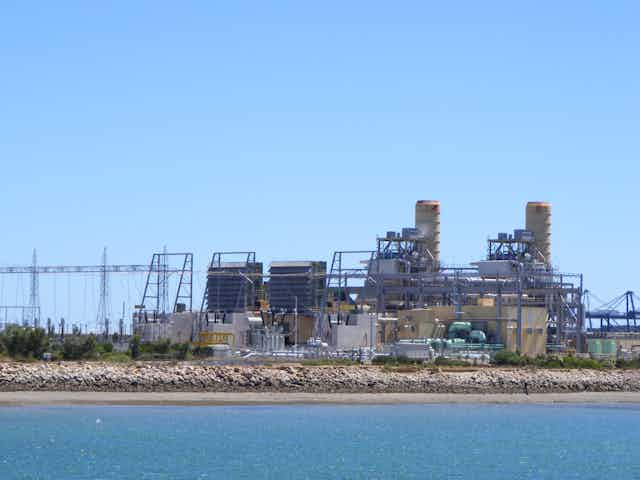Last Wednesday evening, shortly after 6pm local time, around 90,000 homes and businesses in South Australia were deliberately disconnected from the electricity grid for up to an hour. In what is becoming a familiar pattern, this event provoked politicians and political actors to release a stream of claims and counter-claims about what happened and what should be done about it.
So why did it actually happen? At the start of the day, electricity was being supplied by a combination of wind power, the two interconnectors from Victoria, and a modest amount of local gas generation. As the day heated up (the temperature in Adelaide hit a maximum of 42°C), demand grew, wind generation fell away, and the volume of electricity supplied by gas generators increased rapidly.
Half-hourly total state electricity consumption reached its maximum for the day between 5.00pm and 5.30pm, by which time rooftop solar was supplying about 9% of the total. This is a very common pattern on hot days in the state.
As the sun went down, total consumption went down but solar generation went down faster. This is also very common and in theory there is more than enough capacity to meet this level of demand from gas-fired generators plus the interconnectors.
In practice, however, not all of South Australia’s gas generation was available on the day, meaning that it was not sufficient to meet demand. This happened shortly after 6.30pm local time, not helped by the fact that the maximum temperature arrived very late in the day, boosting the demand for after-work air conditioning.
Switched off
To prevent potentially widespread damage to the entire system, which might have triggered even more widespread blackouts, the Australian Energy Market Operator exercised its authority to instruct SA Power Networks (the local “poles-and-wires” distributor) to start a series of rolling disconnections of blocks of consumers – a tactic known as “load-shedding”.
Unfortunately, although the demand was only lowered by 3%, it affected a large number of consumers. It was about 40 minutes before the underlying demand had fallen to the point where available sources of generation could supply all the electricity that was required, at which time all customers were reconnected.
There are two reasons why this was deemed necessary. First, the peak demand for grid electricity was the highest for three years. Second, the amount of gas generation available on Wednesday was about 20% less than the nominally available capacity. Had the full capacity been available, the blackouts would have easily been avoided. It is this fact that has particularly angered the South Australian government, which is once again facing political derision for failing to keep the lights on.
The largest single part of the unavailable capacity is 240 megawatts – roughly 8% of the state’s total gas generation – at Pelican Point power station. Pelican Point is the highest-efficiency, lowest-emission thermal power station in South Australia. But nearly two years ago its owner, the French multinational Engie (which also owns the Hazelwood coal station in Victoria), announced that the rising cost of gas had made it too expensive to run at full capacity. Since then Pelican Point has operated only intermittently, and never at more than half of its nameplate capacity.
What a gas
High gas prices are the direct result of the huge demand for gas by the three export LNG plants at Gladstone, in Queensland. Gas that might notionally have been used to supply electricity for South Australians is instead being shipped to customers in Asia.
Meanwhile, smaller amounts of nominally available gas-fired electricity were also offline in South Australia on Wednesday. We are unlikely to know why until the official reports on the incident are published.
More importantly, however, making more gas generation capacity available is only a short-term fix and does not seriously address the changes needed to maintain, in the words of the National Electricity Objective, a secure, reliable and affordable supply of electricity.
What kinds of changes will be required? A good starting point would be to acknowledge the role that rooftop solar is already playing in reducing peak demand for electricity from the grid. On Wednesday, the peak demand for grid-supplied electricity was about two hours later and 4% lower than it would have been if no one had solar panels.
The need for load-shedding could have been completely avoided with the help of technologies that are already available for power consumers to reduce their own demand. For more than a decade, demand-side participation (which gives consumers more influence over the timing and quantity of their own electricity use) and direct load control (which involves reducing specific customers’ demand at certain times) have both been talked about, reported on, trialled, and instituted in only a desultory way. They have never been taken seriously by either industry participants or their regulators.
Large-scale electricity storage has emerged only recently because of significant cost reductions. These are just some of the likely components of a low-emission, 21st-century electricity supply system.
Almost the only positive action which governments have taken on these matters in recent times has been to establish the review by Chief Scientist Alan Finkel. The real test for the politicians will be whether they understand and act decisively on what Finkel and his colleagues have to say.

